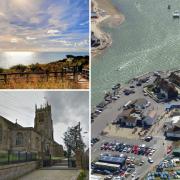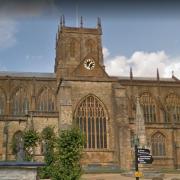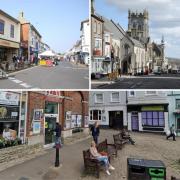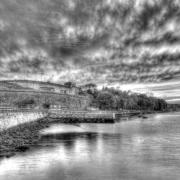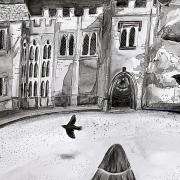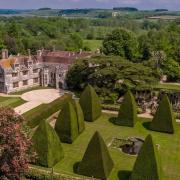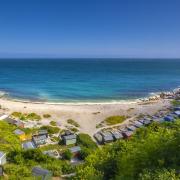Grand railway viaducts and wooded chines create the backdrop to Branksome’s two very different residential areas and both are within easy reach of Poole and Bournemouth
Branksome and Branksome Park in Poole are naturally divided by the dominant A35/Poole Road artery which runs between the two. To the north, Branksome is defined by its industrial architectural legacy from the 1900s: the grand red brick viaducts and the grey cylindrical gas works. To the south, Branksome Park sits in sylvan splendour, with tree lined boulevards, rhododendron and wooded chines. The overall area is well connected to central Bournemouth and Poole town centres, making it a popular residential area.
The railways and waterways join the two areas, as does the verdant landscape. The Branksome Park Conservation Area, designated in 1981, protects a major part of Branksome Park. It has a quite distinctive character derived from the division of land into large building plots in the 19th century. Residents can enjoy quiet walks through the chines, and at its heart there is a bowling green and tennis courts.
In Branksome, The Bourne Valley Greenway, as it is known, is the designated conservation route winding towards Bournemouth. The residential areas around Coy Pond and the Bourne stream are quiet backwaters. Branksome Business Park, to the west, occupies the site of the previous Gas Board premises and offers a more densely populated, affordable area.
The division of the two Branksomes is also prevalent in property prices. Branksome Park was a Victorian seaside suburb with buildings designed to fit within the densely planted and naturally pine-wooded area. The area’s most famous resident was J.R.R. Tolkien, who lived in Lakeside Road in the late 1960s and today it is well-known as one of Poole’s most affluent areas.
The varied architecture within Branksome Park is testament to its gradual development over more than 100 years. Original buildings are typically from the Arts and Crafts movement. Where plots have been redeveloped there are some outstanding contemporary super-homes. The popular Cerne Abbes town house development on The Avenue and the new luxury contemporary house developments on Lakeside Road are good examples of the area’s architectural evolution where heritage and modernity sit side by side.
In contrast, houses in Branksome were built around the Bourne Valley Potteries, the gas works and the railway to house the local workers during the last century. Rows of neat red brick terraces line the roads adjacent to the railway and gas works. These are popular with local families today. Prices are lower per square foot, and the houses are generally smaller in square footage too.
***
READ ON
• 7 reasons to visit Westbourne - things to do and places to visit• Best things about moving to Weymouth• 10 things to see and do in Dorchester




